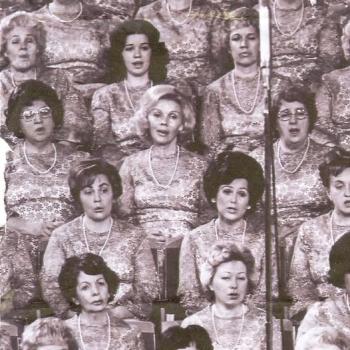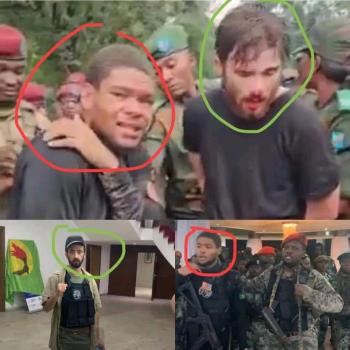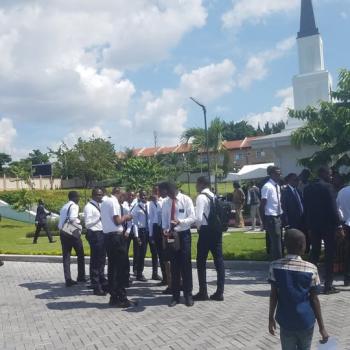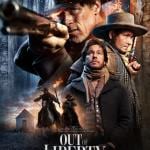 Some forty years ago, I was talking to an excellent LDS filmmaker who told me the one film he dreamed of making would be set in Liberty Jail. But he didn’t want it sugar-coated. He didn’t want a Clark Gable prophet with fresh make-up reciting a prayer like a Shakespearean soliloquy at The Globe. He wanted the smells, the filth, the vermin, the bugs of that dungeon and the prisoners sleep-deprived and on edge. He wanted movie-goers to really feel what Liberty Jail was like for Joseph Smith and those who were with him, when Joseph wrote the long letter which eventually became Sections 121 and 122 of the Doctrine and Covenants.
Some forty years ago, I was talking to an excellent LDS filmmaker who told me the one film he dreamed of making would be set in Liberty Jail. But he didn’t want it sugar-coated. He didn’t want a Clark Gable prophet with fresh make-up reciting a prayer like a Shakespearean soliloquy at The Globe. He wanted the smells, the filth, the vermin, the bugs of that dungeon and the prisoners sleep-deprived and on edge. He wanted movie-goers to really feel what Liberty Jail was like for Joseph Smith and those who were with him, when Joseph wrote the long letter which eventually became Sections 121 and 122 of the Doctrine and Covenants.
Garrett Batty, though not the filmmaker I talked to forty years ago (before Garrett was a gleam in his daddy’s eye), has now made that movie. It’s dark. It has to be dark. But it is one of the most significant films of the past decade, particularly for Latter-day Saints, though it plays well as a western and a jail-break adventure for other audiences.
The cast, particularly Jason Wade as the stoic but fair-minded jailer, Corbin Allred as the over-eager and childlike Porter Rockwell, and Brandon Ray Olive as the pensive and trusting Joseph Smith, join other cast members in a perfect ensemble. It’s a male movie, with women appearing only for about five minutes. But Liberty Jail was a very male setting, and this film seeks to show it accurately.
The cinematography is stunning, especially as we get beauty shots which remind us of the wonders beyond the dungeon-jail–when the audience may breathe a sigh of momentary relief. The drama itself is compelling, and Robert Elliot’s music is perfect for the tension of the situation. Though we know that Joseph and his fellow prisoners will survive their imprisonment, there are moments when we wonder if they might not. It is in every way a well-made movie with thick tension that rises just as it should.
It is far more to me, though, than the sum of good work by a gifted team. I see it as a film which every LDS family (and perhaps every family) should see and take its children to see–ages twelve and up, I’d suggest. Why? Because the film presents the experience of despair in ways which young people will inevitably relate to at some time in their lives. The metaphors of bondange and deliverance (prominent throughout the scriptures) are so deeply felt in this film as to be unforgettable. The despair is so well-realized that the ultimate liberation feels as glorious as it surely was.
As for me personally–I related to Out of Liberty in ways which made me nervous to talk to anyone after I left the theater, lest I burst into tears. (Sorry I didn’t greet the cast members after the premiere, but I was honestly concerned that I’d break down.)
Four years ago, I had some life-changing traumas which I’m still recovering from. I recognized that the traumas had gored a gap into my life. I would never be the person I had been before. But I also understood that the traumas had transformed me–possibly for the better (depending on how I responded), and had prepared a path for me to become a deeper, more compassionate, more grateful person. The time of trauma was dark–dungeon-dark. It included feeling abandoned, unmoored, excruciatingly sad. Near the same time, a friend of mine went to jail after an ambush arrest and was plunged into an even deeper trauma than I was. During unthinkable moments, I saw her life separated into “before” and “after” as she awaited a court date. Her life would never be the same. Jail does that. A dungeon does that.
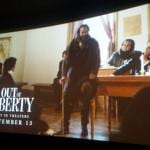 This was my context when I saw Out of Liberty. For the first time in my life, I truly had a hint of what those days had been like for Joseph and his friends in that cruelly constructed jail. (Batty and his set designers were rigorous with the dimensions of Liberty Jail, so the audience understands how formidable it was.) I knew the scriptures in Section 121 and 122 well and yearned to hear them spoken as the film progressed and the tension rose. Finally, Brandon Ray Olive, with all the requisite subtlety, spoke the prayer with a perfect blend of desperation, hope, and exhaustion. I kept a handkerchief pressed to my eyes throughout.
This was my context when I saw Out of Liberty. For the first time in my life, I truly had a hint of what those days had been like for Joseph and his friends in that cruelly constructed jail. (Batty and his set designers were rigorous with the dimensions of Liberty Jail, so the audience understands how formidable it was.) I knew the scriptures in Section 121 and 122 well and yearned to hear them spoken as the film progressed and the tension rose. Finally, Brandon Ray Olive, with all the requisite subtlety, spoke the prayer with a perfect blend of desperation, hope, and exhaustion. I kept a handkerchief pressed to my eyes throughout.
“Oh God, where art thou? And where is the pavilion that covereth thy hiding place? How long can thy hand be stayed?”
These are the words which every young person, Latter-day Saint or not, should commit to memory, for the time will surely come when these words will become the prayer they must utter from their own dejected souls, and the answer will be a balm: “My son, peace be unto thy soul. Thine adversity and thine afflictions shall be but a small moment…The Son of Man hath descended below them all. Art thou greater than He?”
The film won’t be in theaters for much longer, but it deserves a big screen. Don’t wait for a DVD. I am certain that every person who sees it, particularly if that person is young, will have cause to reflect back on its images and words. It will matter in that moment that the director did not sugar-coat, because the dungeon-like moments we endure in our lives are never sugar-coated; in fact, they’re worse than any book or cliche could have prepared us for. It will matter that the actors were not glossy representations but men who genuinely felt the lines. It will matter that the set was not cleaned up for a Hollywood-like presentation but was full of ghastly filth and all the implicit smells. In the midst of despair, we don’t want a sparkling set to pretend it’s a prison.
We don’t have Joseph Smith’s voice quoting the prayer. But we have Brandon Ray Olive’s. His voice does the words justice, and they linger in the mind and soul to be remembered later.
See the film.




